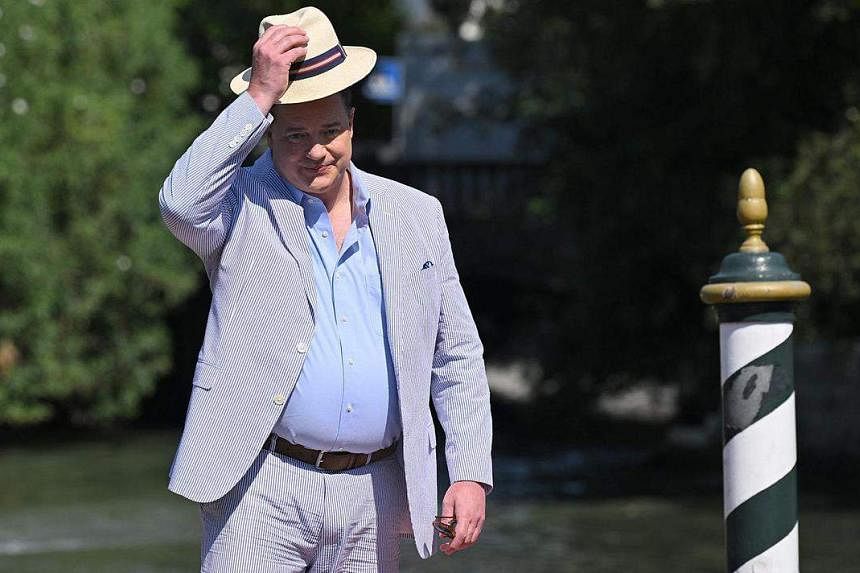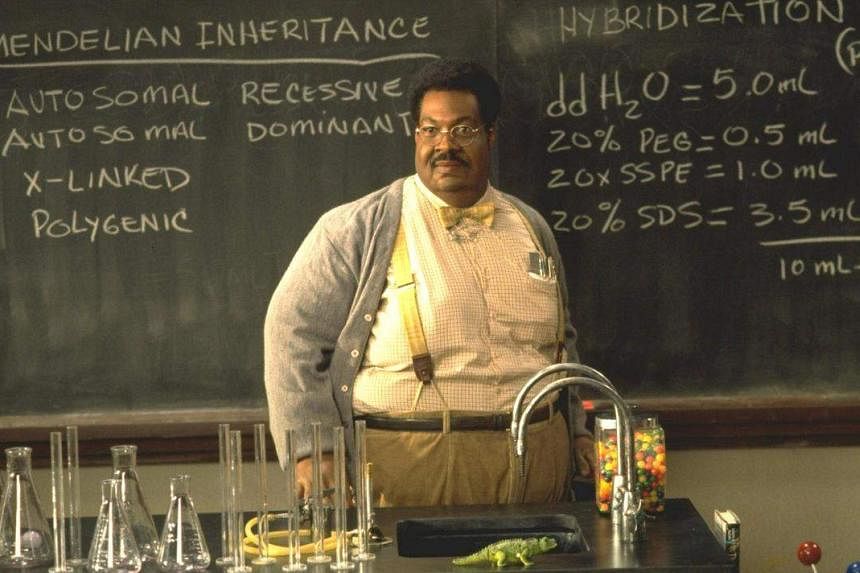NEW YORK – Slender Courteney Cox portraying a plump teenage Monica Geller on Friends started the gag in 1990s Hollywood.
Gwyneth Paltrow’s role in Shallow Hal (2001) kept the joke going. And this year, the bit exploded, as heavy-hitting actors donned fat suits to take on heavy-bodied roles.
All along, real plus-sized people remain invisible.
Actress Emma Thompson, who has spoken out about Hollywood’s unrealistic body standards for women, took social media heat this summer after a photo went viral of her apparently in a fat suit, an image from the coming film adaptation of the stage musical version of Matilda.
In July, audiences watched the muscular Chris Hemsworth work off his dad bod in Thor: Love And Thunder.
And now a resurgent Brendan Fraser is making the rounds of the autumn film festivals promoting The Whale, wherein he portrays a struggling 600-pound (272kg) disabled gay man from under layers of prosthetics.
Other stars seen adding the padding, either real or manufactured, for a role include Sarah Paulson (American Crime Story: Impeachment, 2021), Colin Farrell (The Batman, 2022), Christian Bale (Vice, 2018) and Tyler Perry as Madea in numerous films.
When Hollywood productions tack on effects for actors to play plus-sized characters, the burning question lingers: Why does Hollywood not simply hire big actors to play big characters?
The first answer that comes to mind is money. Movies need to turn a profit and the surest way to generate ticket sales is to pump up the star power. So it is no surprise that producers want bankable names to lead movies and shows.
But thanks to the entertainment industry’s history of avoiding plus-sized talent in leading (or most any) roles, very few have achieved that level of bankability.
Yet if Hollywood took a chance on actors of bigger sizes, is it not possible enough of them could be elevated into an army of top-notch talent to choose from?
J. Kevin Thompson, a retired professor of psychology from the University of South Florida, has spent decades studying the images and perceptions of fat people in the media.
While the early days of the fat suit in film may have served a practical (read: financial) purpose, he said in an e-mail, more recent uses of it can prove psychologically damaging to both viewers and the actors themselves – and women, both onscreen and in the audience, can bear the brunt of the pain.
For men, the opportunity to pile on the kilos slowly is a distinct privilege.
“You can’t shut a production down while your A-list actor eats his way through Italy for three months or so unless you are De Niro,” Prof Thompson said via e-mail, referring to the actor’s Oscar-winning turn in Raging Bull (1980). “Afterward, it became a badge to go all-out Method to gain the weight without the fat suit unless you were female.”
He added: “I’ve looked far and wide and can find maybe 10 per cent of women who were allowed to actually gain the weight for films.”

He pointed to Renee Zellweger, who gained at least 9kg for Bridget Jones’s Diary (2001), or Charlize Theron, who said she put on 22kg for Tully (2018).
As with Friends (1994 to 2004), fat suits are also often solely used as a gag – unrealistic looking (see Eddie Murphy in 1996’s The Nutty Professor) to such a laughable degree that even in a drama, they induce giggles.
For example, Tom Hanks has received some snickers for his obese Col Tom Parker in Elvis (2022). This only adds to the perception of fat people as something to laugh at.
In 2007, Prof Thompson co-wrote an analysis of fat stigmatisation in movies and television that affirmed that perception. “These roles were most often associated with ‘humour’, which, of course, might not be so funny if one were the butt of the joke,” he said of the study’s findings.
Since not every role or production requires the same level of star power, why casting agents cannot give opportunities to the many immensely talented unknown actors in bigger bodies?
The time, salary and manpower poured into fully enveloping Paulson in prosthetics to portray Linda Tripp in Impeachment: American Crime Story rendered her so unrecognisable, one had to wonder: Why her?
In the same series, the beautifully curvy Beanie Feldstein successfully snagged the role of the beautifully curvy Monica Lewinsky, so the producers are aware that sensible casting is possible.
Similarly, viewers could hardly see Farrell through the layers of make-up and prostheses glommed onto him in his role as the Penguin in The Batman.
In some instances, fat suits can work – for example, when a slender actor becomes the doppelganger of the real-life person he or she is portraying (as with Bale evoking Dick Cheney in Vice). Similarly, it can work when used to show the physical progression of a character within a relatively short period of time, as with Hemsworth in Avengers: Endgame (2019) and the latest Thor. It makes little sense to have another actor don the dad bod if one presumes Thor stayed around the same age as he dropped weight.
However, another actress altogether certainly could have played a Monica far removed in age from her present-day self on Friends.
Whether it is for laughs or dramatic effect, at the end of the day, stuffing slender actors into a fat suit feels like a cop-out in casting. Rethinking casting choices is not only about representation, but also about more nuanced storytelling.
Actress Chrissy Metz, for example, presumably earned a role on the NBC smash series This Is Us (2016 to 2022) on the merits of her talent, not her size, yet her size still was crucial to her character arc.

It is well past time for producers to be less observant of body shapes, but let’s also give larger performers a legitimate chance to shine based on more than their appearance. True representation means not just considering, but casting large-sized actors in any role. And that is the shift that could foster big change in Hollywood. NYTIMES

